How to Draw Spikees Out of a Body
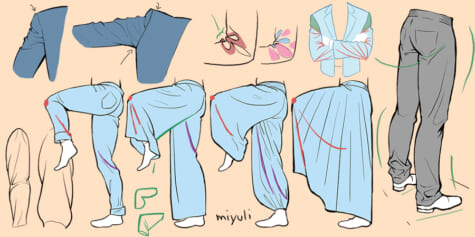
Fabric and folds can take all sorts of forms depending on the softness of the material and the shape of the torso. This illustrated tutorial by comic artist miyuli covers basic concepts and approaches for cartoon fabrics of all kinds.
Folds depend on the form they fall on. They are not universal. There are many dissimilar types and factors that influence them.
There is no unmarried rule on how to draw folds—The best way to empathize curtain is to do as many studies of folds every bit you can. The more than realistic you desire to depict and paint folds, the more references you will need. Understanding some common principles will get in possible to draw them convincingly in a more stylized way.
I've collected some pointers and commonalities hither that I've come up across so far.
Materials
It is very important to consider the materials that you lot draw when dealing with folds. They all have their very own characteristics that help to determine where to put the appropriate folds. Their texture dictates how diffused the shadows are.
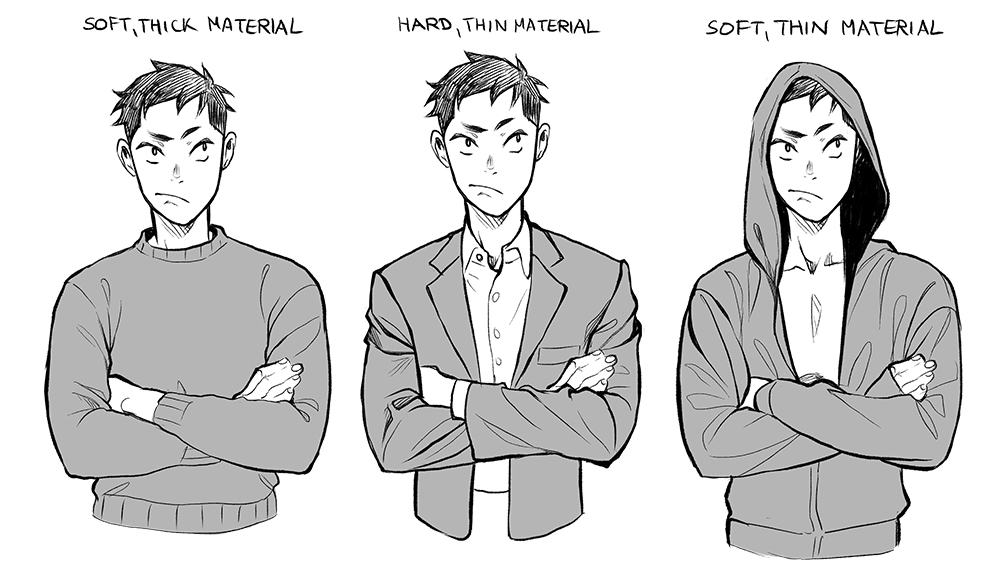
Thicker fabric has wider folds that are usually less visible.
Hard materials are usually pulled more at the bending surface area or at the seams.
Soft and thin material produces the most folds, particularly around the angle areas.
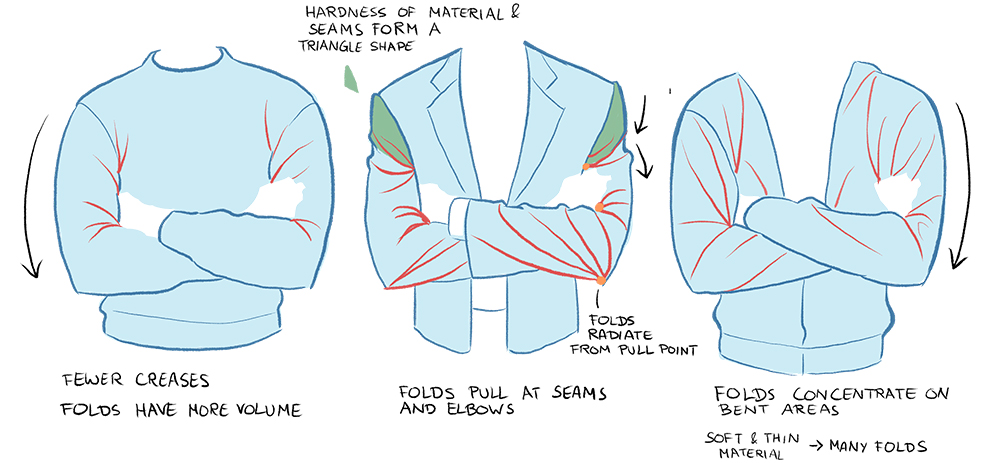
The amount of folds besides depends on how heavy the fabric is and what kind of textile it is made of. When cartoon material it is a good idea to consider how thick/thin, hard/soft, heavy/light and smooth/textured the textile is first.
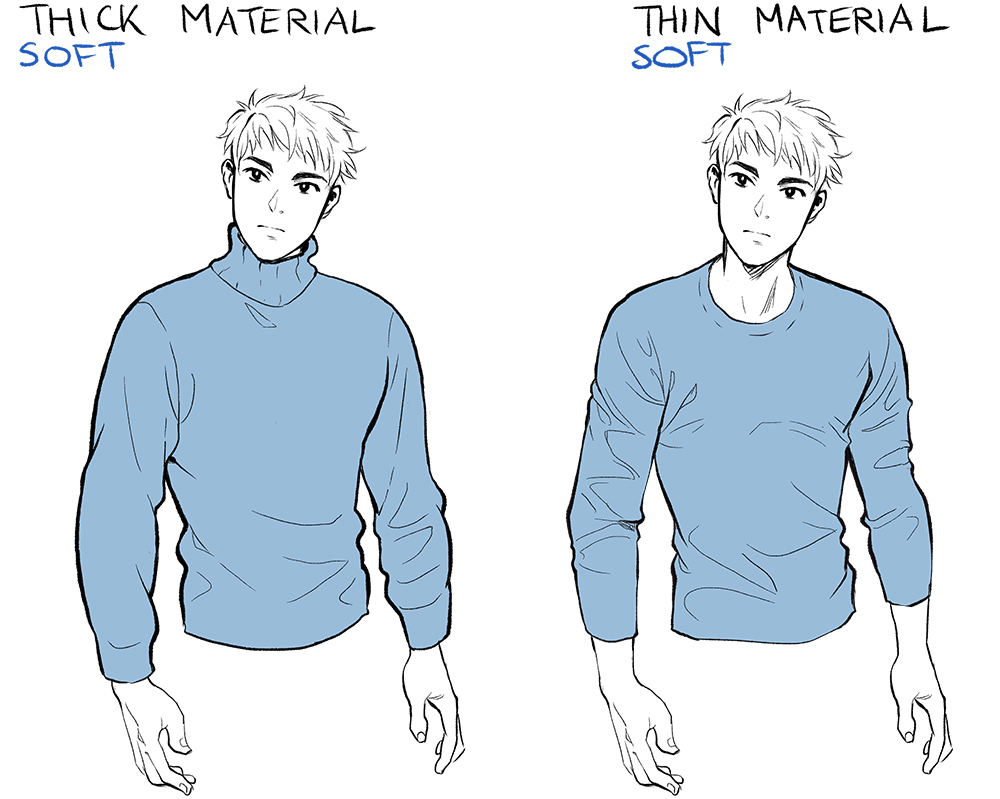
Heavy textile causes folds of a dissimilar volume and different width. Information technology is likewise more idle and shows fewer folds even when moving.
All wearing apparel have their own arrangement of parts, which heavily influences the formation of folds.
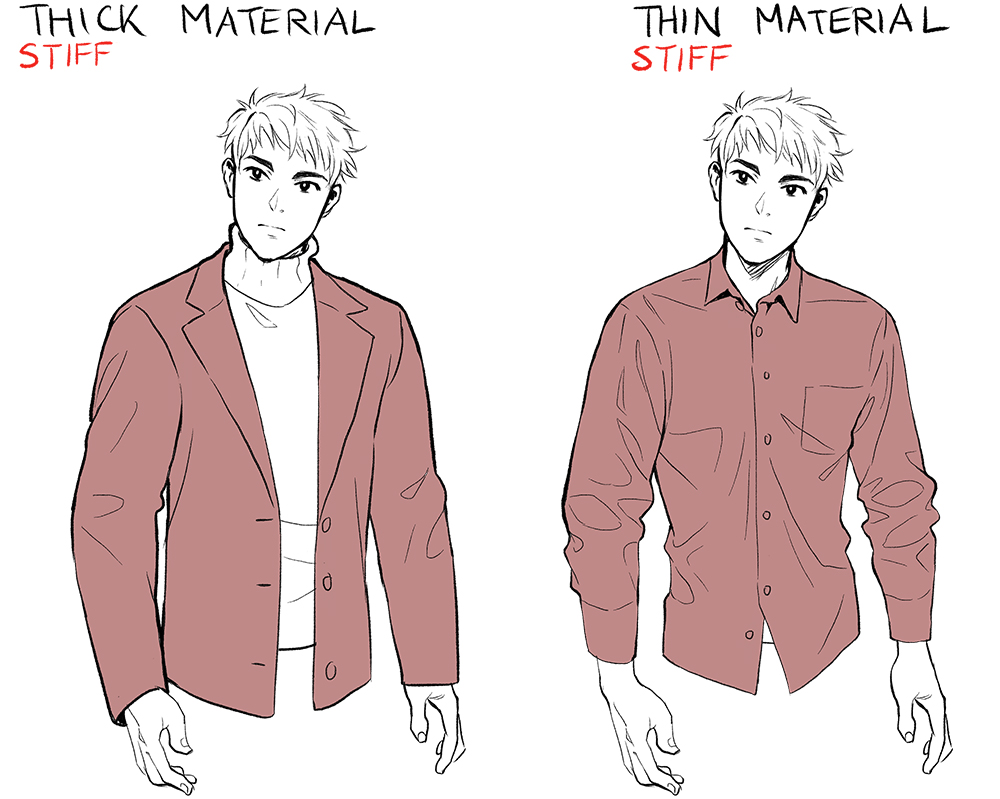
It's good to familiarise yourself with common placements of seams. You don't need to draw them all, only information technology is ameliorate to have a proficient fundamental noesis of the construction.
Folds tend to pull at prominent seams, especially on dress like suits where the transition between seams is quite noticeable at the shoulder.
Sweaters usually accept their arm seams much lower and the folds don't pull at them as much.
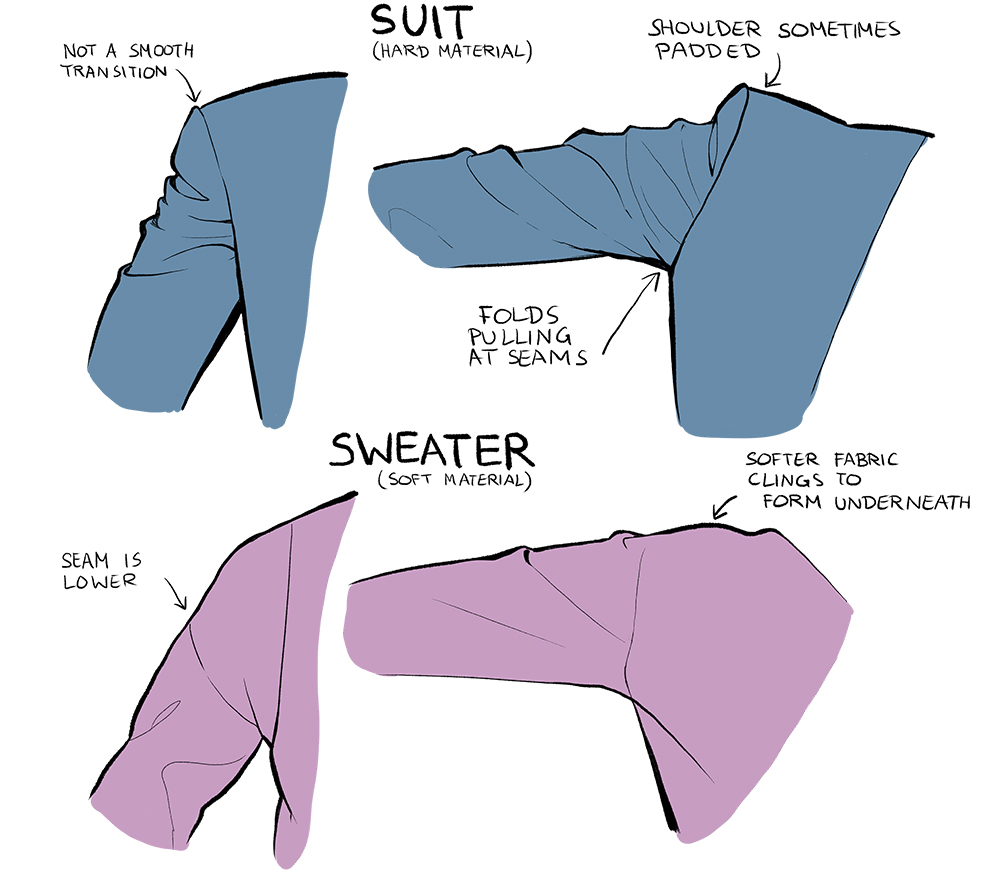
Wearing apparel with a wide cut show different folds than dress with a narrow cut. A tight cut follows the class of the body and wraps around it. Wide apparel prove a lot of droopy folds that get from the pulling point towards the footing.
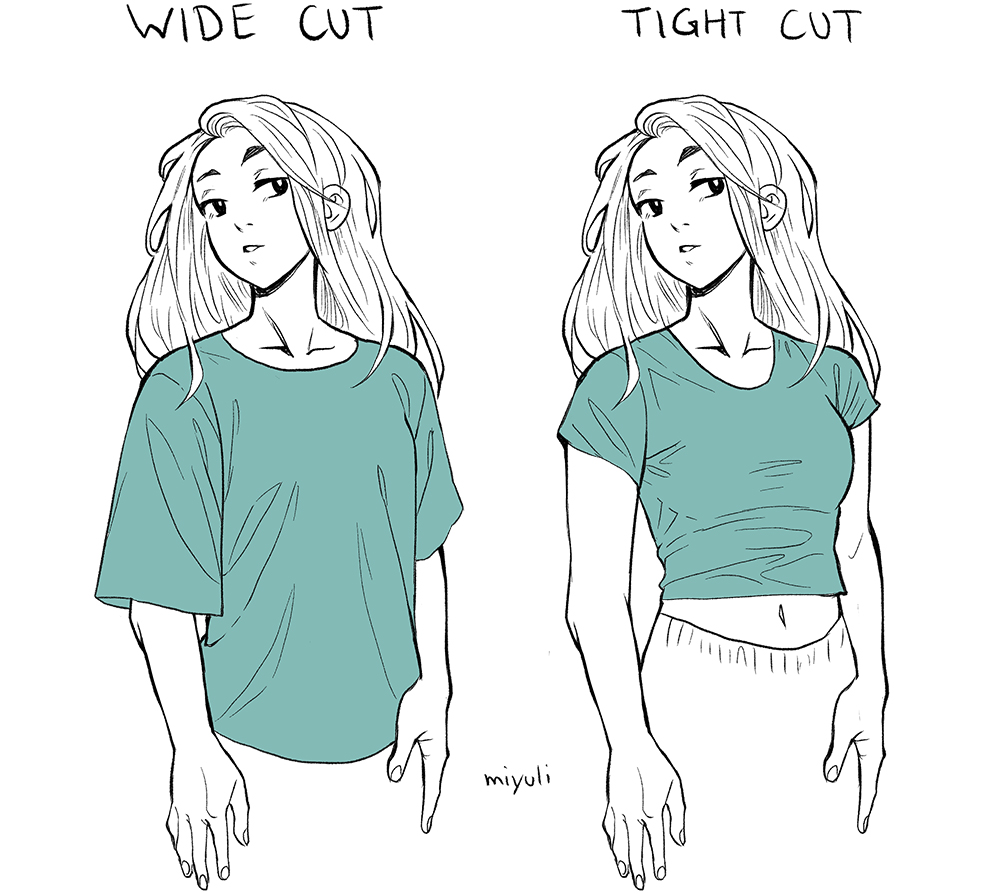
Clothes are often designed with folds or lack thereof in heed.
Fitted material is designed to wait elegant with as few folds every bit possible. When clothes are too tight or too loose in that location are more folds that give a less elegant advent of the wear, especially when looking at the silhouette.
Worn-out fabric tends to crease more than than new or well-maintained fabrics.
Annotation: When drawing apparel and folds, it can assist to consider what material fits the grapheme's personality first.
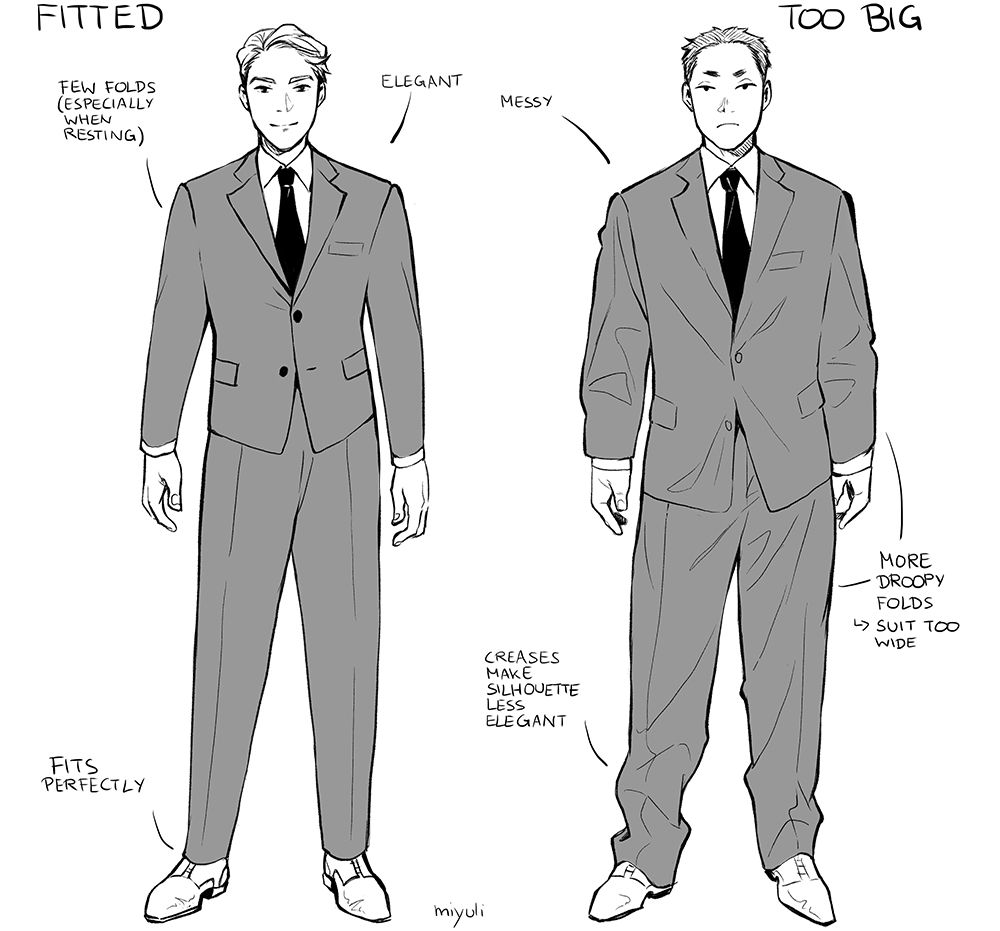
External influences
Folds can be heavily afflicted by wind or water.
Wet cloth acts differently from dry out cloth. It tends to stick more than to the form underneath. The water makes the lite textile a lot heavier, and so it does not movement as easily anymore. Sparse fabric becomes see-through.
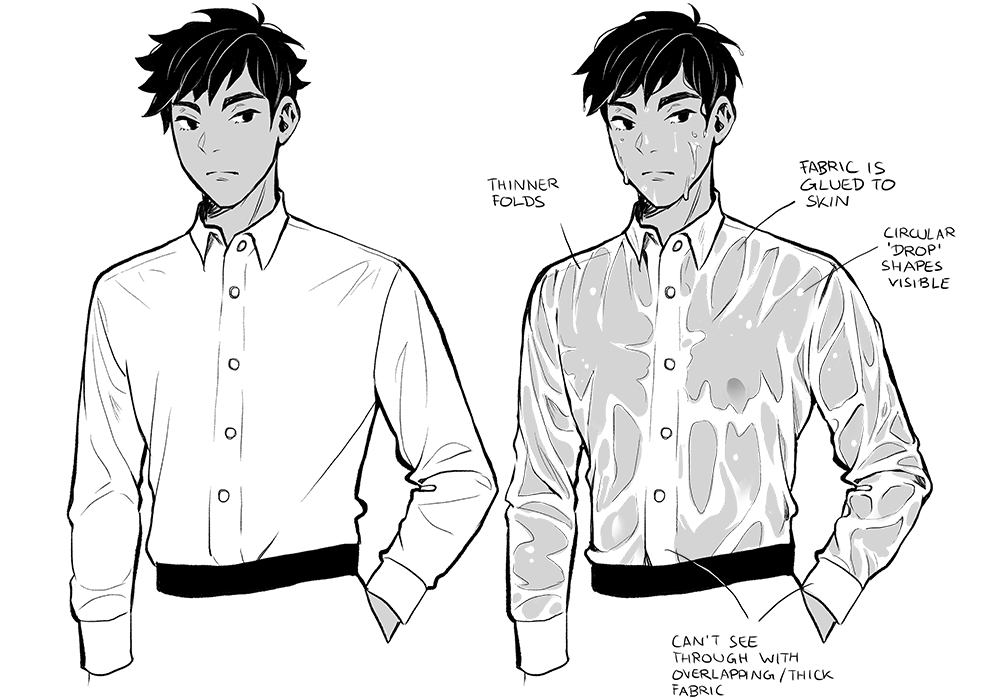
Movement
When the body is resting the fabric is unremarkably dragged down by gravity. More prominent droopy folds appear the wider and lighter the fabric is.
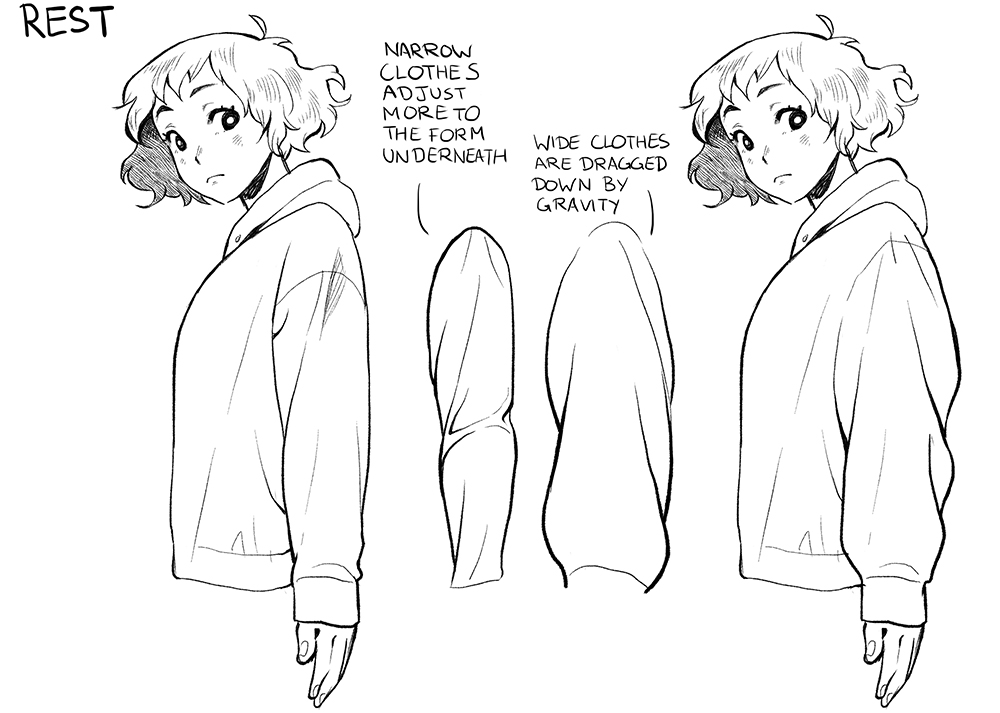
When bent the cloth is pressed together and creates hollow shapes that vary in size.
There are more bumps with more narrow cloth. Wide material tends to squish together with fewer folds.
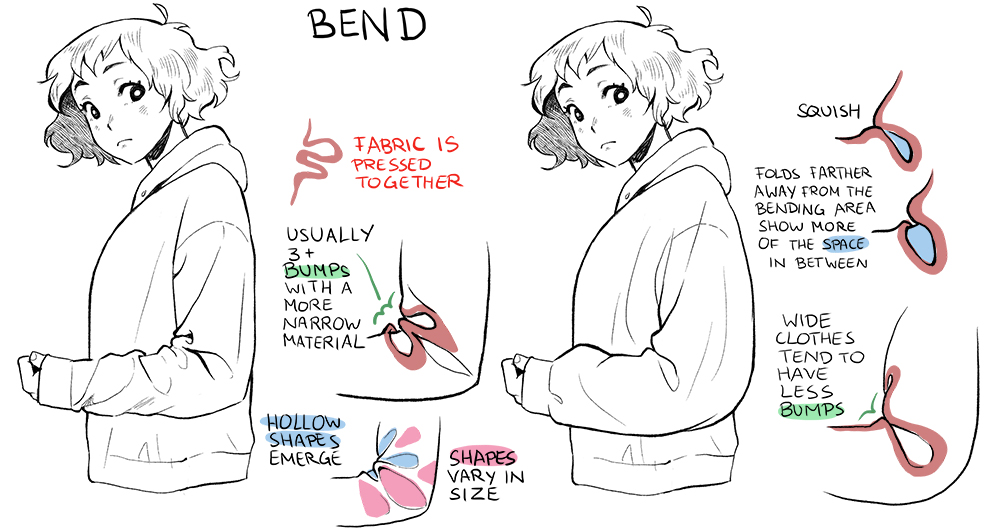
The material adapts to the forms' move. Folds usually follow the twist. Information technology can be very helpful to emphasize the movements.
Note that the lighter and thinner material in the instance above shows fewer folds since the arm is still mostly resting.
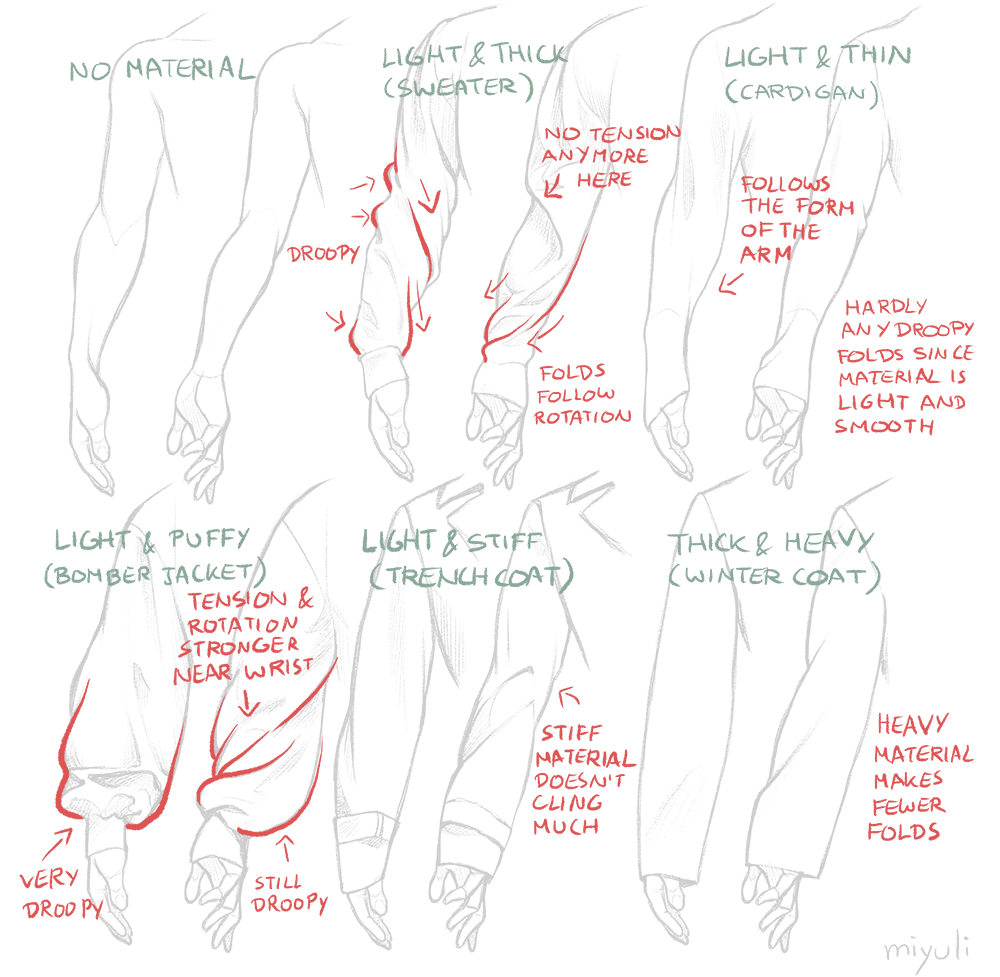
The arms heavily dictate the pulling areas where folds sally.
Opening a jacket absorbs some of the pulling when the arms are raised.
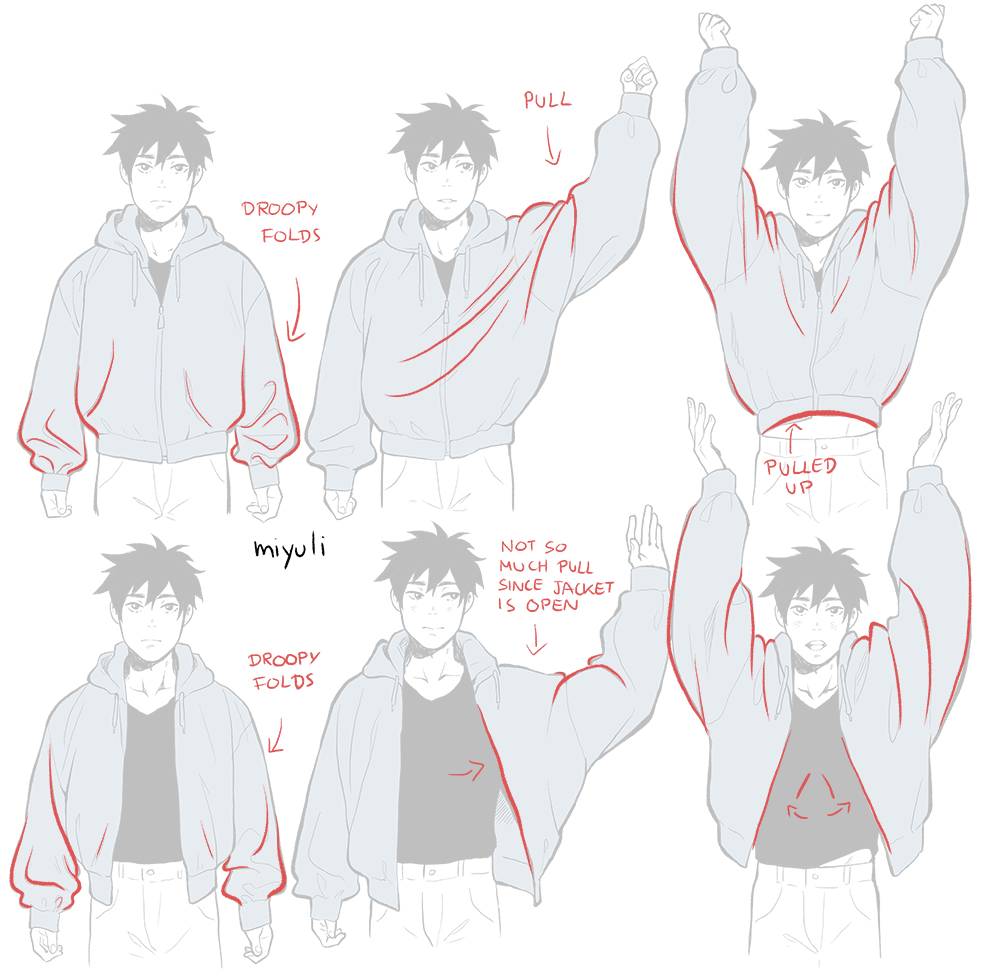
Pants
The fabric of the pants is supported at the waistline.
Pants first wider and narrow down to the knees because they adapt to the bone structure of the legs.
With narrow pants, creases are unremarkably visible at the knees.
When cartoon bumps in the fabric it's good to show their origin and volume. It does make a visual difference when you tin imagine the folds in a three-dimensional space.
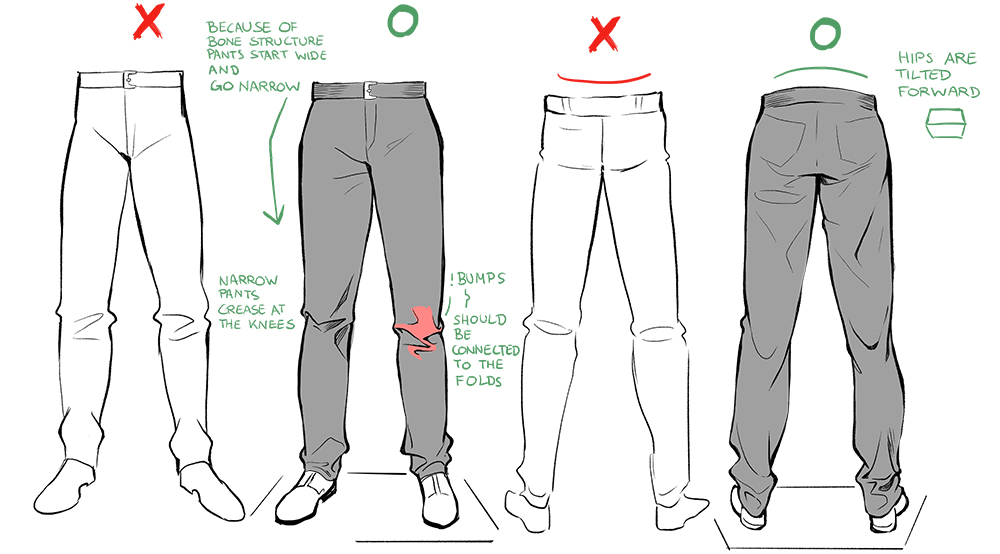
From the back, y'all can see folds forming nether the barrel region that go upward to the hip.
The folds at the knees are also visibly pulled by the hips from the back view.
In general, when the body is just standing and resting, there are less dynamic folds.
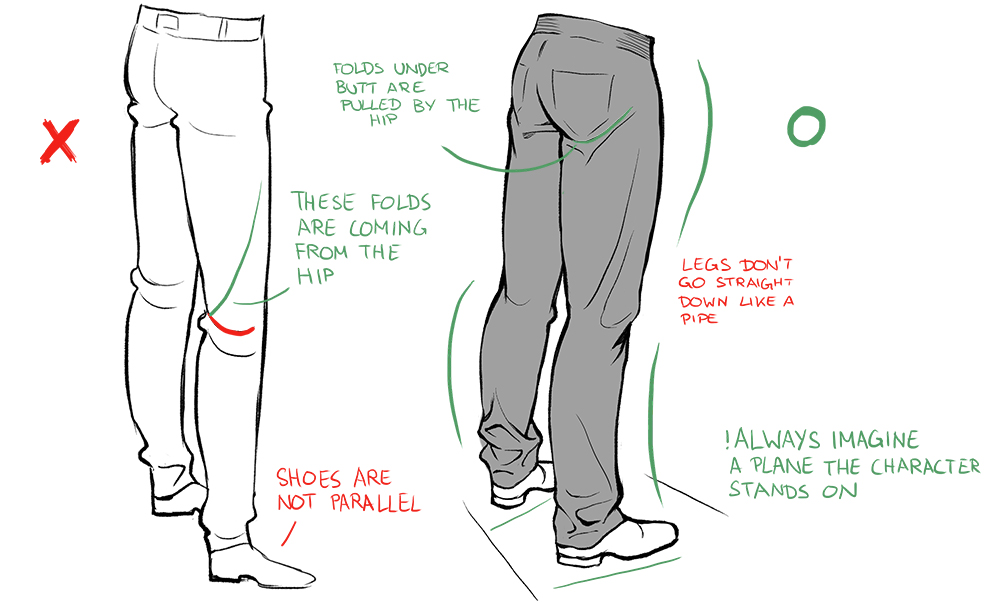
When a leg is lifted, the human knee becomes the strongest pulling indicate.
Be careful of the forms that the pant legs create when the leg moves.
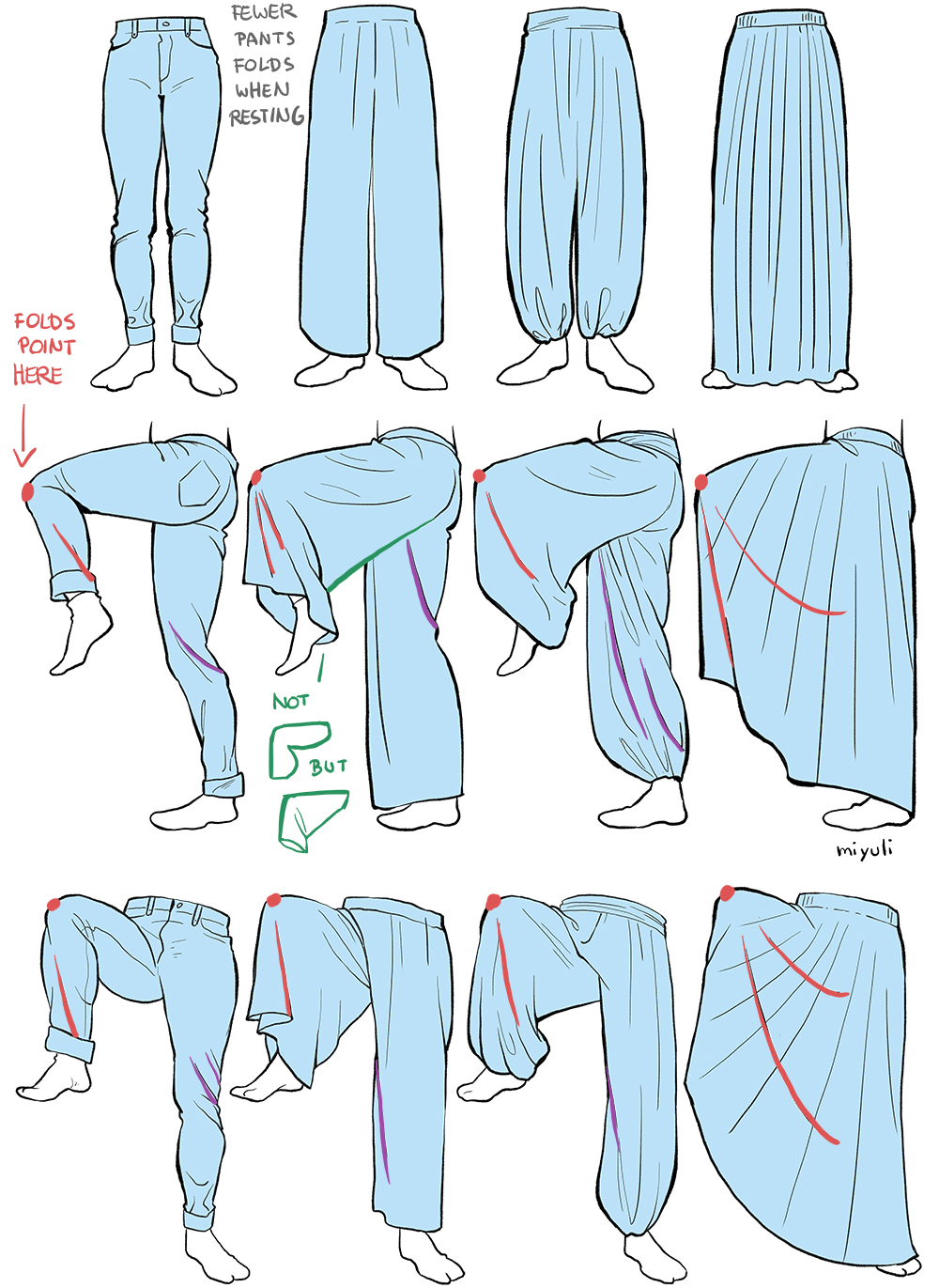
Shadows and Highlights
Depending on the thickness of the cloth the shadows around the folds appear slightly different.
When shading folds, information technology's good to use a combination of soft and hard edges.
When painting pay attention to how smooth and soft the cloth is. The smoother it is, the more it reflects light and has a brighter highlight. Rougher and more textured materials diffuse lite.
The darkest area is ordinarily where forms are pressed together and an occlusion shadow appears. This also applies to very deep creases where light does not accomplish.
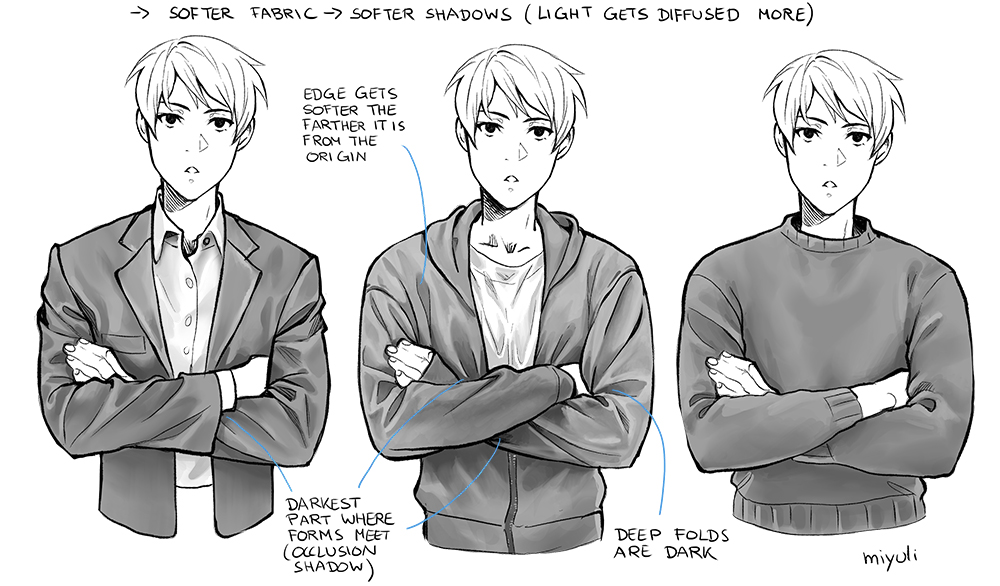
Hither are some quick tips that I noticed while shading materials.

The shading, like the width of the folds, varies between soft edges or highlights depending on the textile, then information technology's adept to familiarise yourself with every bit many materials as possible to build up a rich visual library.
Source: https://www.clipstudio.net/how-to-draw/archives/157926